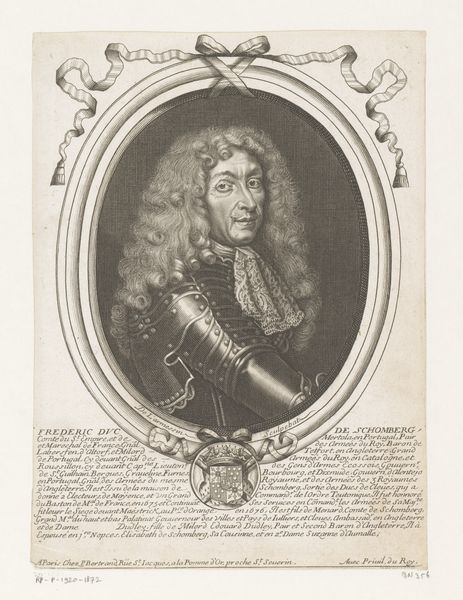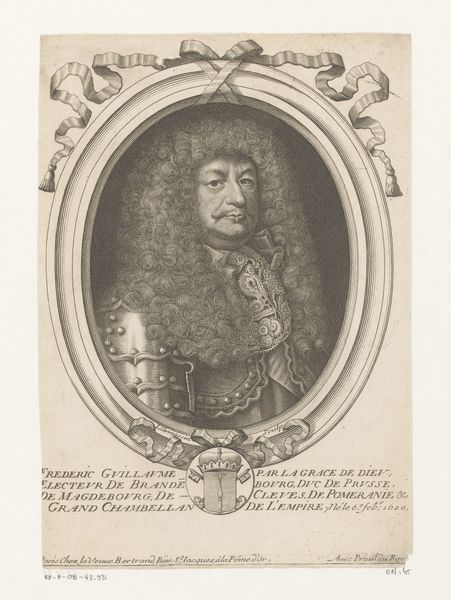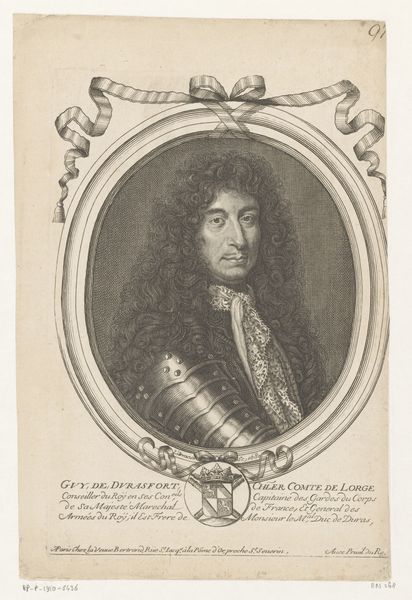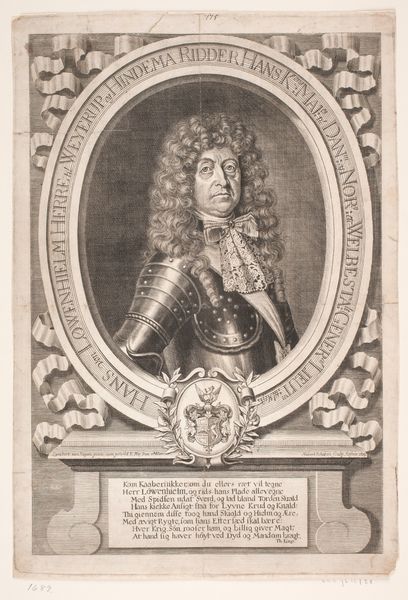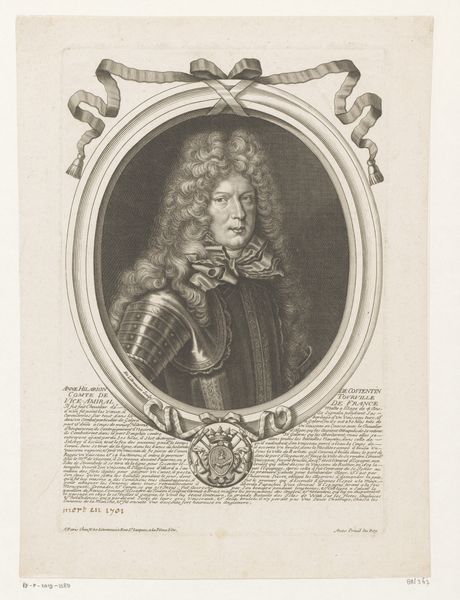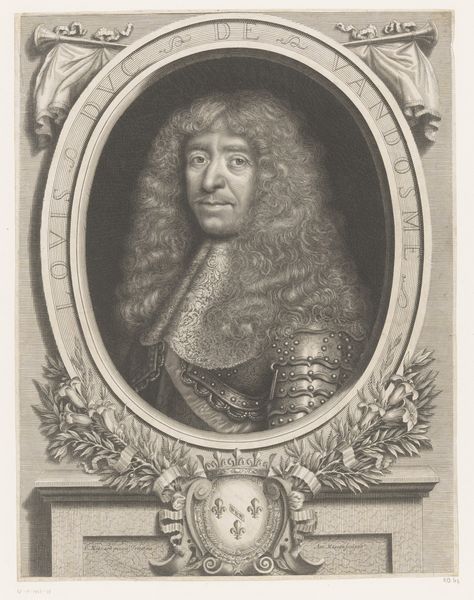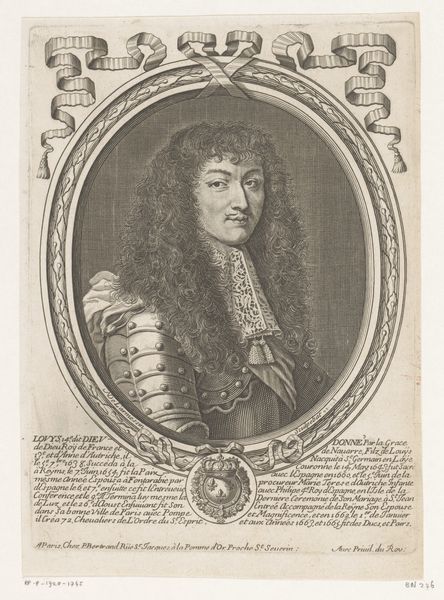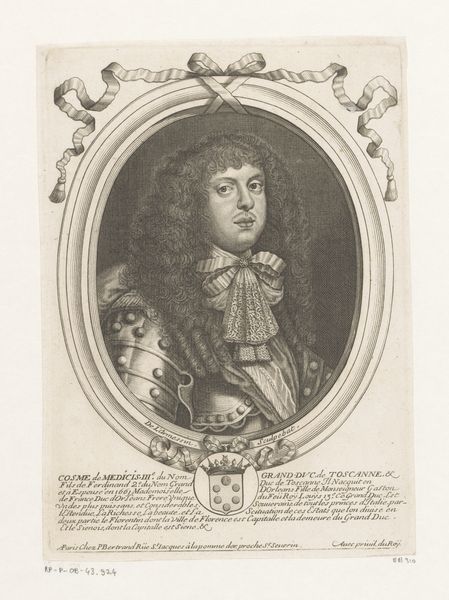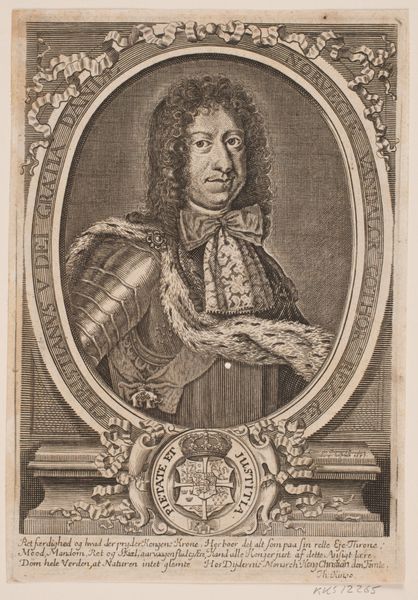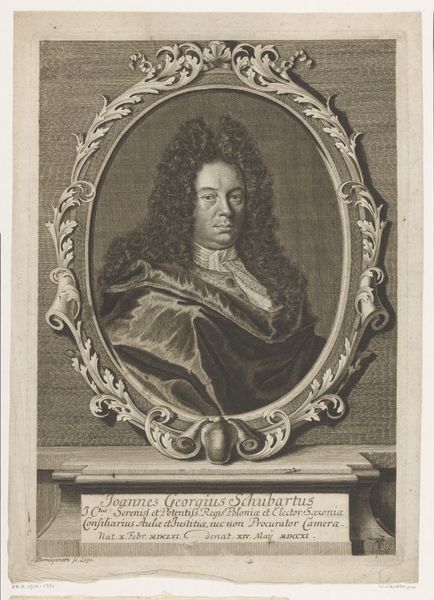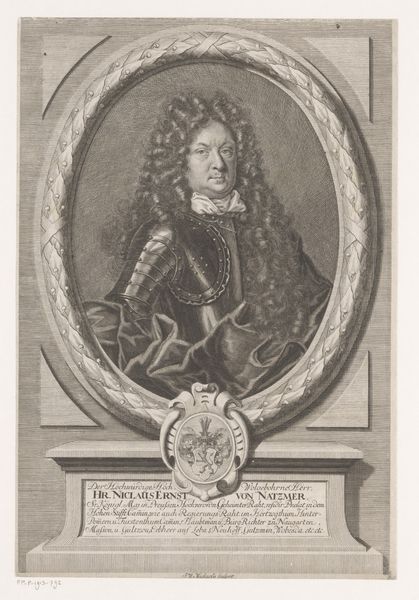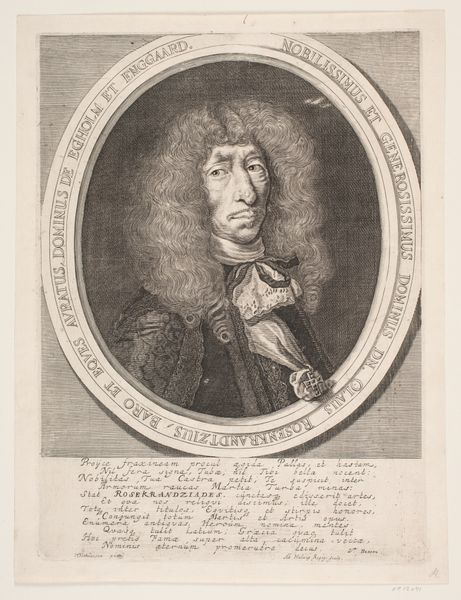
engraving
#
portrait
#
baroque
#
old engraving style
#
history-painting
#
academic-art
#
engraving
Dimensions: height 249 mm, width 166 mm
Copyright: Rijks Museum: Open Domain
Curator: There's something so striking about the directness of this engraving. Editor: I agree. There is a formality that feels undeniably weighted by class. But let’s bring our listeners in; this is a portrait of Louis de Crévant, Duke of Humières, etched into paper in 1690 by Nicolas de Larmessin, currently held at the Rijksmuseum. Curator: And Larmessin captured the essence of status perfectly. See the meticulously rendered armor, reflecting power and preparedness, juxtaposed with the ornate lace collar which speaks volumes of aristocratic leisure and excess. Editor: The choice of engraving feels significant, too. It democratizes the image in some ways, making it reproducible and therefore more accessible to a wider audience, but then this same medium reproduces ideals that concentrate power among very few. The swirling hair feels as calculated and impenetrable as the list of military campaigns listed on the sheet, celebrating Humières' participation. It's propaganda parading as portraiture. Curator: I read it as more nuanced than simple propaganda. Engravings, with their precise lines, evoke a sense of permanence. By placing his likeness within an oval frame adorned with ribbon, the Duke isn't simply declaring his importance; he’s appealing to an image of enduring legacy, aspiring toward timeless ideals of chivalry and honor. The symmetry offers reassurance amidst the turbulence of the late 17th century. Editor: Yes, but those very symbols—the armor, the list of military victories—are drenched in violent realities. It is hard to ignore the colonial underpinnings of this glorification, especially now, as we wrestle with the legacies of that era. Even the decorative ribbon alludes to ceremonial gestures rooted in unequal distributions of power. What message does this image, so deliberately curated, send across time? Curator: It makes me contemplate the masks of power – the visual languages of self-presentation across generations. We grapple still with many of these symbols today. Editor: Yes, and hopefully grapple more critically and inclusively. Works like this serve as both artifacts and reminders of power's persistent performance. It helps me question everything that comes after.
Comments
No comments
Be the first to comment and join the conversation on the ultimate creative platform.
